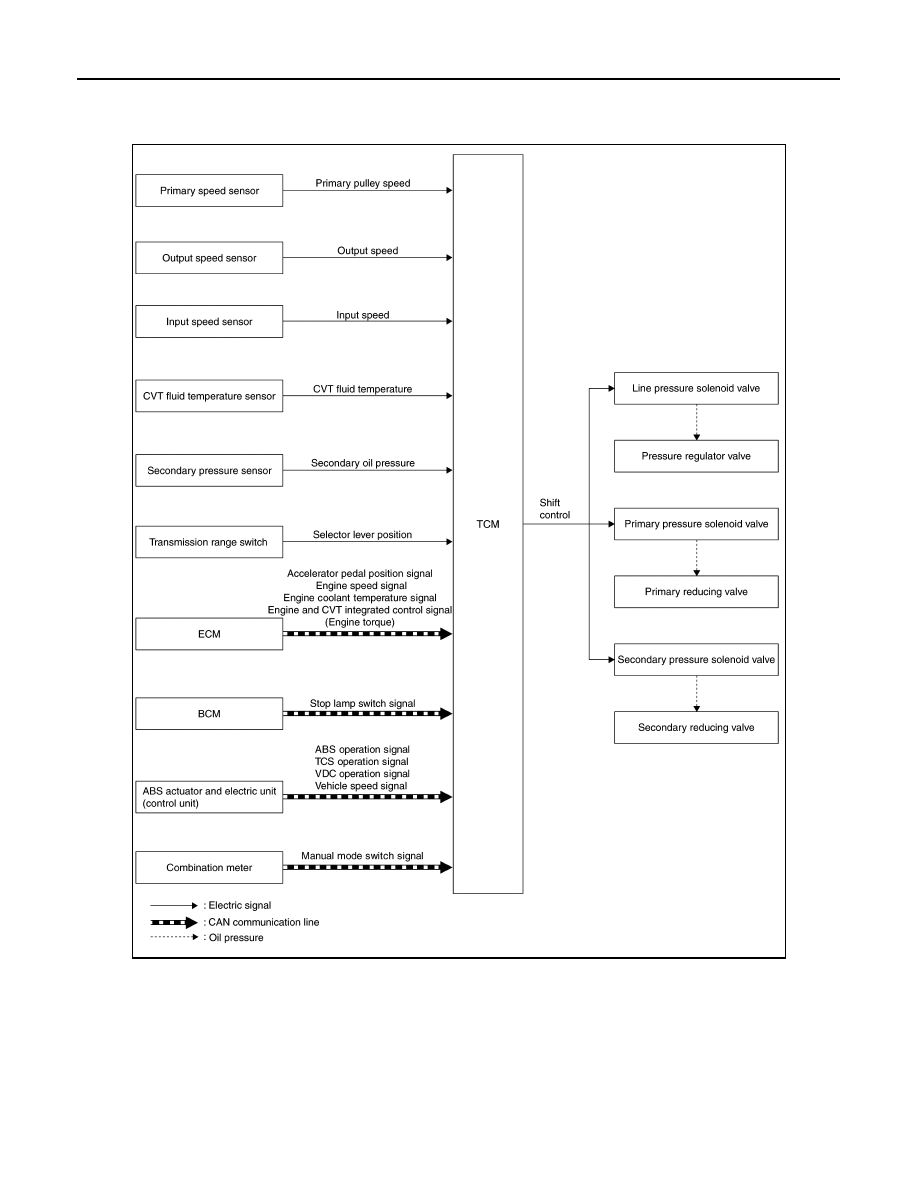Content .. 1297 1298 1299 1300 ..
Nissan Juke F15. Manual - part 1299

TM-386
< SYSTEM DESCRIPTION >
[CVT: RE0F10D]
SYSTEM
SHIFT CONTROL : System Description
INFOID:0000000012201102
SYSTEM DIAGRAM
DESCRIPTION
To select the gear ratio that can give the driving force to meet driver's intent or vehicle situation, the vehicle
driving condition such as vehicle speed or accelerator pedal position is detected and the most appropriate
gear ratio is selected and the shifting method before reaching the speed is determined. The information is out-
put to the primary pressure solenoid valve and secondary pressure solenoid valve to control the line pressure
input/output to the pulley, to determine the pulley (movable pulley) position and to control the gear position.
Shift Position Function
• D Position (Normal)
JSDIA5313GB